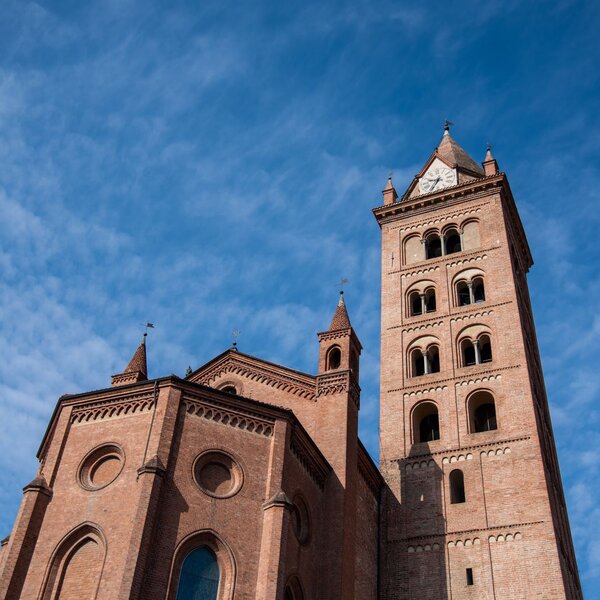Find out more

Alba, in white and red
Find out moreAn unusual stop on the way to the Langa or Roero hills.
On the route from Piazza Ferrero (formerly Piazza Savona) up towards the Alta Langa, near Corso Langhe, we find the Romanesque Church (13th century) of Santa Margherita di Antiochia (set right at the end of the homonymous street) where the remains of one of the few surviving extra muros churches can be seen. Of particular interest is the semicircular apse enhanced with three single-lancet windows and some small arches at the top. The structure is part of the modern Parish Church of Santa Margherita.
In San Cassiano, on the way out of Alba towards the Langa del Barolo, a stop at the ancient Abbey of San Frontiniano, whose abbot governed many lands in the Langa, is a must. (San Frontiniano was a proto-martyr executed together with his companion San Cassiano in the year 311 just outside the town: it is believed that the abbey stands on the site of the execution). Today it is a private building in which, however, the proportions of the monastery, the bell tower and even an exterior fresco from the 15th century are still clearly visible.
Part of the town's archaeological trail is also visible in San Cassiano. It preserves, at the level of the foundations, a complex of funerary monuments of different types that can be traced back to the southern necropolis of the Imperial Roman period which developed along the road that led from Alba Pompeia to Pollentia ( today's Pollenzo) and Augusta Bagiennorum (currently Bene Vagienna).
Find out more

A stroll through Alba
Alba in history, a role still visible today. Despite the small size of its town centre, which is still a perfect replica of the Roman castrum (Via Vittorio Emanuele II serves as cardo and Via Cavour as decumanus), the city holds many pleasant surprises in store, starting with the memories of Alba Pompeia, the name given by the Latin conquerors to the Ligurian village they were preparing to colonize.
Find out moreOnce you are in the car, there is still time to enjoy Alba in its rural hamlets, which already stretch into the pure Langa hills. And while Altavilla, with its beautiful villas on the hills, is still a small town in itself, San Rocco Seno d'Elvio is already a Barbaresco DOCG; the Madonna di Como hill, on the other hand, is like a cable car of vineyards in the sky. Heading towards the Roero, you will also spot the village of Scaparoni on top of the hill, an absolute archetype of any country hamlet, with a church and a few houses almost surrounding it. Finally, on the way to Canale and then Turin, it is impossible not to see the austere and modern structure of the Church of the Transfiguration in Mussotto, which, not only is appreciated for its tent-like form, but also preserves works by the famous French painter Arcabas.
PLEASE NOTE: Responsibility for the maintenance and practicability of the various trails lies with the municipalities where the routes are located. The Tourist Board, therefore, cannot be held responsible for any inefficiencies, but is willingly available to collect your reports so that they can be forwarded to the authorities concerned.


